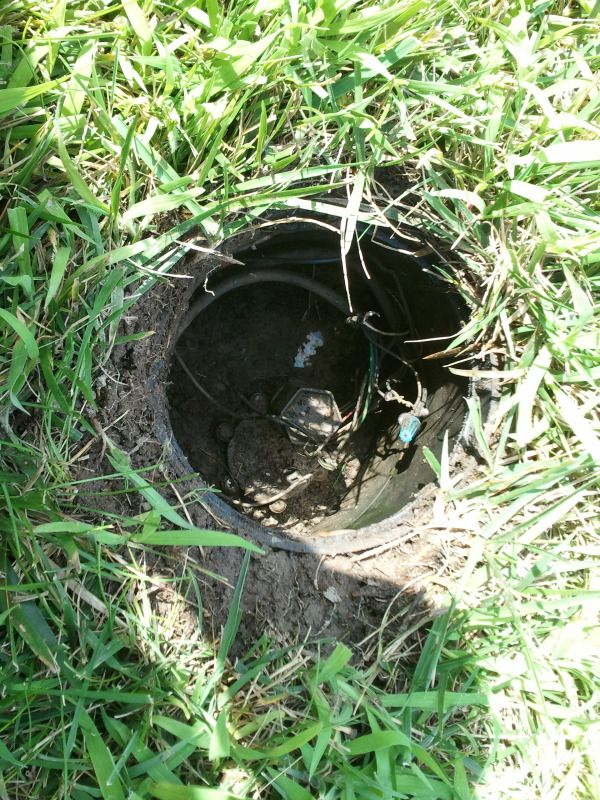 SPRINKLER TALK FORUM - You Got Questions, We've Got Answers »
SPRINKLER TALK FORUM - You Got Questions, We've Got Answers » Help with Troubleshooting / Service / Repair »
Help with Troubleshooting / Service / Repair » Not Sure What's Wrong? »
Not Sure What's Wrong? » Slow leak at sprinkler head »
Slow leak at sprinkler head »
Reply
Dear visitor, welcome to SPRINKLER TALK FORUM - You Got Questions, We've Got Answers. If this is your first visit here, please read the Help. It explains how this page works. You must be registered before you can use all the page's features. Please use the registration form, to register here or read more information about the registration process. If you are already registered, please login here.
Attention: The last reply to this post was 4294 days ago. The thread may already be out of date. Please consider creating a new thread.
The last 10 posts
Monday, July 30th 2012, 12:12pm
by GatorGuy
Valve location can be anywhere.
Near house running to zone far away. (house==valve =====head====head====head)
On one end or other of zone. (house ========head====head====head====valve===head)
Or in middle of zone.
head====head====head
II
valve
II
head====head===head
Monday, July 30th 2012, 11:51am
by smashclash
Could it be logical to locate the valve by turning on the zone and trying to spot which sprinkler head pops up first and starts spitting air/water? That should tell me where the line is coming in from and would give me a reasonable area to start probing the lawn.
Monday, July 30th 2012, 8:40am
by GatorGuy
Not as much exercise.
Sunday, July 29th 2012, 7:28pm
by smashclash
Here's a photo of the house from the street. The pipe comes out from the side of the house and then at some point goes under the driveway to the front yard. There's a telecom line that runs along near the sidewalk and that's making finding things a little more challenging.
I found the receipt from when the previous homeowner had the sprinkler system installed. It was 05/11/01. I emailed the installer asking if by chance they might have a diagram in their records that I could get a copy of. I use them when I winterize my system so maybe I'll get lucky. We'll see. But this blind poking in the ground isn't getting me anywhere.


Sunday, July 29th 2012, 3:02pm
When we install zones that MUST have a line under a driveway, we do whatever we can to avoid running the mainline under the drive. What I am trying to say is that the valve may be on the opposite side of the driveway from where the sprinklers are.
If they, in fact, had to run a line under the drive, then look along the edges of the drive for areas that are sunk or low from the installers digging trenches in order to install the line under the drive. This would at least give some reference for the direction the line runs.
I would search the left side of the drive judging by the lay out of the houses/drives in the houses across the street. I would not run mainline under that driveway.
Sunday, July 29th 2012, 2:36pm
by smashclash

Next photo is the cover of the can that has a valve and piping and wiring in it. This is the only one I know about. It's pretty close to the house and inbetween where the electric and water come out of the house.

Here it is with the lid removed

And here is a photo of the side of my house. The yellow arrow on the left is where the electric from the rainbird brain comes out of the garage and into the ground. The yellow arrow on the right is where the water piping comes out the house and into the ground. (FYI, I had to replace the faulty pressure vacuum breaker a month ago). And the pink arrow in the middle is the can with the valve and electric that I referenced above.

So, now that you can see what I'm working with should I start blindly just sticking the screwdriver in the ground in that patch of grass in the front yard with the leaky head. Should I be looking for a similar can as above with the green top or could the valve be buried by itself without any protection elsewhere in the yard?
Sunday, July 29th 2012, 1:48pm
by Wet_Boots
Sunday, July 29th 2012, 1:38pm
FYI...a "weeping valve" is a term given to a sprinkler valve that doesn't completely close.
Sunday, July 29th 2012, 11:14am
by smashclash
